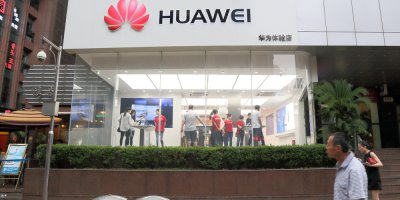
New-age factories gearing up for 5G say experts. Source: Shutterstock
Organizations are excited about the prospects of 5G — Study
BUSINESSES often struggle to adopt new and emerging technologies that are yet to be proven. It’s why blockchain or distributed ledger technology had such a hard time taking off.
But that’s not the case with 5G. Although the technology is yet to make a debut anywhere in the world, it’s something that is making waves behind closed doors in board meetings everywhere.
Gartner’s latest survey indicates that 66 percent of organizations surveyed are excited about 5G and have plans to deploy 5G by 2020.
IoT communications, according to the survey, was the most popular target use case for 5G, with 59 percent of organizations saying they expect 5G-capable networks to be widely used for this purpose. The next most popular use case is video, which was chosen by 53 percent of the respondents.
“In terms of 5G adoption, end-user organizations have clear demands and expectations for 5G use cases. However, one major issue that 5G users face is the lack of readiness of communications service providers (CSPs). Their 5G networks are not available or capable enough for the needs of organizations,” explained Gartner Senior Research Director Sylvain Fabre.
True 5G infrastructure will need time
According to experts, in order to fully leverage the capabilities of 5G, a new network topology is required. This includes new network elements such as edge computing, core network slicing, and radio network densification.
In the short to medium term, Gartner believes organizations that want to use 5G for IoT communications, video, control and automation, fixed wireless access, and high-performance edge analytics will find it hard to fully rely on 5G public infrastructure for delivery.
Analysts at Gartner find the figure for IoT communications quite surprising given that other proven and cost-effective alternatives, such as Narrowband IoT over 4G and low-power wide-area solutions, already exist for wireless IoT connectivity.
However, they believe 5G is uniquely positioned to deliver a high density of connected endpoints — up to 1 million sensors per square kilometer — which might be a game-changer for many industries.
“Additionally, 5G will potentially suit other subcategories of IoT that require very low latency. With regard to video, the use cases will be varied. From video analytics to collaboration, 5G’s speed and low latency will be well suited to supporting 4K and 8K HD video content.”
Gartner predicts that, by 2022, half of the CSPs that have completed commercial 5G deployments will fail to monetize their back-end technology infrastructure investments, due to systems not fully meeting 5G use case requirements.
“Most CSPs will only achieve a complete end-to-end 5G infrastructure on their public networks during the 2025-to-2030 time frame — as they focus on 5G radio first, then core slicing and edge computing.”
CSPs’ 5G public networks plans vary significantly in timing and scope. CSPs will initially focus on consumer broadband services, which may delay investments in edge computing and core slicing, which are much more relevant and valuable to 5G projects.
In order to meet the demands of businesses, Gartner recommends that technology product managers planning 5G infrastructure solutions focus on 5G networks that offer not only 5G radio but also core slicing and edge computing infrastructure and services for private networks.
CSPs alone may not fully satisfy the short-to-midterm demands of organizations that are keen to deploy 5G quickly.
“Private networks for enterprises will be the most direct option for businesses that want to benefit from 5G capabilities early on.
“These networks may be offered not only by CSPs but also directly by infrastructure vendors — and not just by the traditional large vendors of infrastructure, but also by suppliers with cloud and software backgrounds.”
READ MORE
- Ethical AI: The renewed importance of safeguarding data and customer privacy in Generative AI applications
- How Japan balances AI-driven opportunities with cybersecurity needs
- Deploying SASE: Benchmarking your approach
- Insurance everywhere all at once: the digital transformation of the APAC insurance industry
- Google parent Alphabet eyes HubSpot: A potential acquisition shaping the future of CRM




